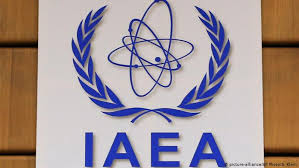The head of the International Atomic Energy Agency said his body is ready to send a monitoring team upon request to check treated radioactive water set to be discharged from the crippled Fukushima No. 1 nuclear plant to address concerns over environmental impact.
“We can cooperate if the government of Japan so decides and invites us. We could cooperate in the whole spectrum of the operation, before, during and afterwards,” IAEA Director-General Rafael Grossi said in a recent interview, citing the U.N. nuclear watchdog’s expertise and experience.
“We are in preparatory talks” with the Japanese government over how to deal with the accumulating water, Grossi said.
The government is considering the option of releasing the water used to cool reactors stored at the crippled Fukushima power station into the sea, but has yet to make a final decision amid strong opposition by the local fishery industry due to concerns about the reputation of marine products.
Neighboring countries such as China and South Korea have also expressed wariness over discharging the water from the Fukushima plant into the environment.
Grossi, an Argentine diplomat who succeeded the late Yukiya Amano as director general in December last year, said the IAEA can play “an extremely constructive role” in addressing concerns about the release of the water into the environment, such as by sharing information based on scientific facts.
When Prime Minister Yoshihide Suga visited the plant in September, he said the government wants to make a decision “as soon as possible” on how to dispose of the water. Chief Cabinet Secretary Katsunobu Kato said Sunday during a visit to Fukushima Prefecture that the government can no longer put off the decision.
The power plant suffered core meltdowns due to the massive earthquake and tsunami on March 11. 2011, in the world’s worst nuclear crisis since Chernobyl in 1986.
The water has been treated using an advanced liquid processing system, or ALPS, to remove most contaminants other than relatively less toxic tritium. It is stored in tanks on the facility’s premises but space is expected to run out by the summer of 2022.
Evaporating the water from the plant was also among disposal options discussed.
“Regulated discharge to the open sea or evaporation, are technically feasible” and “in line with the current practice and best practices internationally,” the IAEA chief said.
Reflecting back on his visit to the Fukushima No. 1 nuclear complex in February, “I feel humbled and impressed by the devotion, the effort of all the operators there and the technical people, the national regulation agency — everybody who is involved in the decommissioning and reconstruction efforts,” Grossi said.
He said the IAEA plans to organize an international conference to mark the 10th anniversary of the Fukushima nuclear crisis where participants including experts from Japan can discuss nuclear safety.
Grossi also said the construction of a final disposal site for high-level radioactive waste from nuclear power plants, under discussion in Japan, is technically feasible, citing the case of Onkalo, the world’s first spent nuclear fuel repository in Finland.
“The solution of deep geological permanent depository exists — it is there. Of course one has to make an assessment of the types of rock one is working on,” he said.
Two municipalities in Hokkaido recently signed up for preliminary research into their land to gauge its suitability for hosting a deep-underground disposal site for high-level radioactive nuclear waste. But Hokkaido Gov. Naomichi Suzuki and local fishermen are among those opposed to the idea.

 Iran Energy News Oil, Gas, Petrochemical and Energy Field Specialized Channel
Iran Energy News Oil, Gas, Petrochemical and Energy Field Specialized Channel



